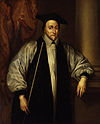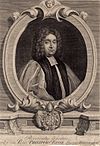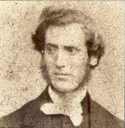Liste der Bischöfe von Hereford
Die folgenden Personen waren Bischöfe von Hereford in England:
Putta gilt als erster Bischof von Hereford. In einigen Quellen wird aber auch Magonset als erster Bischof angegeben. Seine Amtszeit soll von 670 bis 676 gewesen sein. Grundsätzlich sind die Zahlen bis circa 1050 nur vage Angaben, da die Quellenlage aus dieser Zeit nur sehr unklare Angaben macht. Ab 1535 wandten sich die ersten Bischöfe der Reformation zu. 1559 gehörte der letzte Bischof der Römisch-katholischen Kirche an, danach der Church of England:
| Bischöfe von Hereford | |||
|---|---|---|---|
| Name (Lebensdaten)[1] | Amtszeit | Anmerkung | Bild |
| Putta † um 688 | 676 bis 688 | er ist nicht identisch mit dem Bischof von Rochester[2] | |
| Tyrhtel | 688 bis 705/710 | ||
| Torhthere | 710 bis 727/731 | ||
| Weahlstod | 727/731 bis 731/736 | ||
| Cuthbert | 736 bis 740 | danach Erzbischof von Canterbury | |
| Podda | 741 bis 747/758 | ||
| Acca (Ecca) | 747/758 bis 758/770 | ||
| Headda (Ceadda) | 758/770 bis 770/777 | ||
| Ealdberht | 777 bis 781/787 | ||
| Esne | 781/787 bis 787/788 | ||
| Ceolmund | 787/788 bis 793/798 | ||
| Utel | 793/798 bis 801 | ||
| Wulfheard | 801 bis 822/824 | ||
| Beonna | 824 bis 825/832 | ||
| Eadwulf | 825/832 bis 836/839 | ||
| Cuthwulf | 836/839 bis 857/866 | ||
| Deorlaf | 857/866 bis 884/888 | ||
| Cynemund | 888 bis 888/901 | ||
| Eadgar | 888/901 bis 930/931 | ||
| Tidhelm | 930/931 bis 937 | ||
| Wulfhelm | 937 bis 937/940 | ||
| Ælfric | 937/940 bis 951/955 | ||
| Æthelwulf | 951/955 bis 1012 | ||
| Athelstan † 10. Februar 1056 | 1012 bis 1056 | ||
| Leofgar | 1056 | ||
| Ealdred | 1056 bis 1060 | in gleichen Zeitraum auch Bischof von Worcester, danach Erzbischof von York | |
| Walter von Lothringen | 1061 bis 1079 |  | |
| Robert de Losinga † 26. Juni 1095 | 1079 bis 1095 | ||
| Gerard von Roðem | 1096 bis 1100 | danach Erzbischof von York | 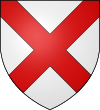 |
| Vakant | 1101 bis 1107 | ||
| Reynelm de Bec † 27./28. Oktober 1115 | 1107 bis 1115 |  | |
| Geoffrey de Clive † 2. Februar 1119 | 1115 bis 1119 |  | |
| Vakant | 1119 bis 1121 | ||
| Richard de Capella † 15. August 1127 | 1121 bis 1127 | ||
| Vakant | 1127 bis 1131 | ||
| Robert de Bethune † 16. April 1148 | 1131 bis 1148 |  | |
| Gilbert Foliot † 18. Februar 1187[3] | 1148 bis 1163 | danach Bischof von London |  |
| Robert de Melun † 27. Februar 1167 | 1163 bis 1167 |  | |
| Vakant | 1167 bis 1174 | ||
| Robert Foliot † 9. Mai 1186 | 1174 bis 1186 |  | |
| William de Vere † 24. Dezember 1198 | 1186 bis 1198 |  | |
| Giles de Braose † nach 18. November 1215 | 1200 bis 1215 | das Haus Braose |  |
| Hugh de Mapenore † 16. April 1219 | 1216 bis 1219 | ||
| Hugh Foliot † 7. August 1234 | 1219 bis 1234 |  | |
| Ralph de Maidstone † 27. Januar 1245 | 1234 bis 1239 | hat das Amt am 17. Dezember 1239 aufgegeben. Blason (englischen): Sable a Chevron between three Cups covered Argent crowned Or | |
| Peter d'Aigueblanche † 27. November 1268 | 1240 bis 1268 | ||
| John le Breton † vor 12. Mai 1275 | 1269 bis 1275 | ||
| Thomas de Cantilupe † 25. August 1282 | 1275 bis 1282 | vorher Lordkanzler |  |
| Richard Swinfield † 15. März 1317 | 1283 bis 1317 | ||
| Adam Orleton † 18. Juli 1345[4] | 1317 bis 1327 | danach Bischof von Worcester und Winchester | |
| Thomas Charleton † 11. Januar 1344 | 1327 bis 1344 |  | |
| John Trilleck † 30. November 1360 | 1344 bis 1360 |  | |
| Louis Charleton † 23. Mai 1369 | 1361 bis 1369 |  | |
| William Courtenay † 31. Juli 1396[5] | 1370 bis 1375 | danach Bischof von London und Erzbischof von Canterbury, sowie Lordkanzler |  |
| John Gilbert † 28. Juli 1397[6] | 1375 bis 1389 | davor Bischof von Bangor; danach Bischof von St. Davids |  |
| John Trefnant † zwischen 26. März und 23. April 1404 | 1389 bis 1404 | ||
| Robert Maschal † 22. Dezember 1416 | 1404 bis 1416 | ||
| Edmund Lacy † 18. September 1455[7] | 1417 bis 1420 | danach Bischof von Exeter | |
| Thomas Polton † 23. August 1433[8] | 1420 bis 1421 | danach Bischof von Chichester und Worcester |  |
| Thomas Spofford | 1422 bis 1448 | Amt aufgegeben im Dezember 1448 | |
| Richard Beauchamp † 4. November 1481[9] | 1449 bis 1450 | danach Bischof von Salisbury | 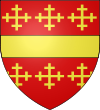 |
| Reginald Boulers † zwischen 24. März und 10. April 1459 [10] | 1451 bis 1453 | danach Bischof von Coventry und Lichfield | |
| John Stanbury † 11. Mai 1474 | 1453 bis 1474 | davor Bischof von Bangor | |
| Thomas Milling † nach 12. Januar 1492 | 1474 bis 1492 | ||
| Edmund Audley † 23. August 1524[9] | 1492 bis 1502 | davor Bischofe von Rochester; danach Bischof von Salisbury |  |
| Adriano de Castello † 1521[11] | 1502 bis 1504 | danach Bischof von Bath und Wells |  |
| Richard Mayo † 18. April 1516 | 1504 bis 1516 | ||
| Charles Booth † 5. Mai 1535 | 1516 bis 1535 | sowie Kanzler der Walisischen Marken |  |
| Edward Foxe † 8. Mai 1538 | 1535 bis 1538 | gewählt Anglikanische-Synodepräsident |  |
| Edmund Bonner † 5. September 1569[12] | 1538 bis 1539 | Er war gewählt, wurde aber nicht als Bischof von Hereford geweiht. Er wurde dann Bischof von London. | |
| John Skippe (oder Skyppe) † 28. März 1552 | 1539 bis 1552 | ||
| John Harley † 1557/58[13] | 1553 bis 1554 | er wurde im März 1554 abgesetzt. |  |
| Robert Parfew (oder Parfoye oder Wharton) † 22. September 1557 | 1554 bis 1557 | davor Bischof von St. Asaphs | |
| Thomas Raynold † 24. November 1559[14] | 1558 bis 1559 | er war der letzte römisch-katholische Bischof, obwohl er nie geweiht wurde | |
| John Scory † 25. Juni 1585 | 1559 bis 1585 | davor Bischof von Chichester | |
| Herbert Westfaling † 1. März 1602 | 1585 bis 1602 | ||
| Robert Bennett † 20. Oktober 1617 | 1603 bis 1617 | ||
| Francis Godwin † nach 29. April 1633 | 1617 bis 1633 | davor Bischof von Llandaff | |
| William Juxton † 4. Juni 1663[15] | Oktober 1633 | nur gewählt, aber dann als Bischof nach London und später Erzbischof von Canterbury | |
| Augustine Lindsell † 6. November 1634 | März 1634 bis November 1634 | davor Bischof von Peterborough | |
| Matthew Wren † 24. April 1667[16] | März 1635 bis Dezember 1635 | danach Bischof von Norwich und Ely | |
| Theophilus Field † 2. Juni 1636 | 1635 bis 1636 | davor Bischof von St. Davids | |
| George Coke † 10. Dezember 1646 | 1636 bis 1646 | davor Bischof von Bristol |  |
| Vakant | 1646 bis 1660 | ||
| Nicholas Monck † 17. Dezember 1661 | 1660 bis 1661 |  | |
| Herbert Croft † 18. Mai 1691 | 1662 bis 1691 |  | |
| Gilbert Ironside † 27. August 1701 | 1691 bis 1701 | davor Bischof von Bristol | |
| Humphrey Humphries † 20. November 1712 | 1701 bis 1712 | davor Bischof von Bangor | |
| Philip Bisse † 6. September 1721 | 1713 bis 1721 | davor Bischof von St. Davids | |
| Benjamin Hoadley † 7. April 1761[17] | 1721 bis 1723 | davor Bischof von Bangor; danach Bischof von Salisbury und Winchester | |
| Henry Egerton † 1. April 1746 | 1724 bis 1746 |  | |
| James Beauclerk † 20. Oktober 1787 | 1746 bis 1787 | 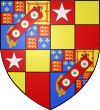 | |
| John Harley † 9. Januar 1788 | 1787 bis 1788 |  | |
| John Butler † 10. Dezember 1802 | 1788 bis 1802 | davor Bischof von Oxford | |
| Ffoliot Herbert Walker Cornewall † 5. September 1831[18] | 1803 bis 1808 | davor Bischof von Bristol; danach Bischof von Worcester |  |
| John Luxmoore † 21. Januar 1830[6] | 1808 bis 1815 | davor Bischof von Bristol; danach Bischof von St. Asaphs | |
| George Isaac Huntingford † 29. April 1832 | 1815 bis 1832 | davor Bischof von Gloucester | |
| Edward Grey † 24. Juni 1837 | 1832 bis 1837 |  | |
| Thomas Musgrave † 4. Mai 1860[19] | 1837 bis 1847 | danach Erzbischof von York | |
| Renn Dickson Hampden † 23. April 1868 | 1848 bis 1868 |  | |
| James Atlay † 24. Dezember 1894 | 1868 bis 1894 | ||
| John Percival † 3. Dezember 1918 | 1895 bis 1917 | er ist am 31. Oktober 1917 zurückgetreten | |
| Herbert Hensley Henson † 28. September 1947[20] | 1918 bis 1920 | danach Bischof von Durham | |
| (Martin) Linton Smith † 9. März 1944[21] | 1920 bis 1930 | davor Suffraganbischof von Warrington; danach Bischof von Rochester | |
| Charles Lisle Carr † 2. Februar 1942 | 1930 bis 1941 | er ist am 30. September 1941 zurückgetreten | |
| Richard Godfrey Parsons † 26. Dezember 1948 | 1941 bis 1948 | davor Suffraganbischof von Middleton und Bischof von Southwark | |
| Tom Longworth | 1949 bis 1961 | davor Suffraganbischof von Pontefract | |
| Mark Allin Hodson | 1961 bis 1974 | davor Suffraganbischof von Taunton | |
| John Richard Gordon Eastaugh | 1974 bis 1990 | ||
| John Keith Oliver | 1990 bis 2003 | ||
| Anthony Martin Priddis | 2004 bis 2013 | ||
| Richard Frith | seit 2014 | ||
Weblinks
- Liste der katholischen Bischöfe in Catholic Encyclopedia (englisch)
- Liste von 1066 bis 1300 auf www.british-history.ac.uk (englisch)
- Liste der Bischöfe (englisch)
Einzelnachweise
- ↑ Wenn nicht anderes vermerkt, stammen alle Angaben aus Powicke & Fryde: Handbook of British Chronology. Second Edition, London, 1961, Seite 229 bis 231
- ↑ Patrick Sims-Williams, Putta (d. c.688), Oxford Dictionary of National Biography, Oxford University Press, 2004 gesehen am 3. September 2011
- ↑ Powicke & Fryde: Handbook of British Chronology. Second Edition, London, 1961, Seite 239
- ↑ Powicke & Fryde: Handbook of British Chronology. Second Edition, London, 1961, Seite 258
- ↑ Powicke & Fryde: Handbook of British Chronology. Second Edition, London, 1961, Seite 211
- ↑ a b Powicke & Fryde: Handbook of British Chronology. Second Edition, London, 1961, Seite 279
- ↑ Powicke & Fryde: Handbook of British Chronology. Second Edition, London, 1961, Seite 226
- ↑ Powicke & Fryde: Handbook of British Chronology. Second Edition, London, 1961, Seite 261
- ↑ a b Powicke & Fryde: Handbook of British Chronology. Second Edition, London, 1961, Seite 252
- ↑ Powicke & Fryde: Handbook of British Chronology. Second Edition, London, 1961, Seite 234
- ↑ T. F. Mayer, Castellesi, Adriano (c.1461–1521), Oxford Dictionary of National Biography, Oxford University Press, 2004 gesehen am 3. September 2011
- ↑ Kenneth Carleton, Bonner, Edmund (d. 1569), Oxford Dictionary of National Biography, Oxford University Press, 2004; online edn, May 2006 gesehen am 3. September 2011
- ↑ Gordon Goodwin, Harley, John (d. 1557/8), Rev. Andrew A. Chibi, Oxford Dictionary of National Biography, Oxford University Press, 2004; online edn, Oct 2009 gesehen am 3. September 2011
- ↑ Kenneth Carleton, Raynold, Thomas (d. 1559), Oxford Dictionary of National Biography, Oxford University Press, May 2005; online edn, Jan 2008 gesehen am 3. September 2011
- ↑ Powicke & Fryde: Handbook of British Chronology. Second Edition, London, 1961, Seite 212
- ↑ Powicke & Fryde: Handbook of British Chronology. Second Edition, London, 1961, Seite 224
- ↑ Powicke & Fryde: Handbook of British Chronology. Second Edition, London, 1961, Seite 259
- ↑ Powicke & Fryde: Handbook of British Chronology. Second Edition, London, 1961, Seite 263
- ↑ Powicke & Fryde: Handbook of British Chronology. Second Edition, London, 1961, Seite 266
- ↑ Powicke & Fryde: Handbook of British Chronology. Second Edition, London, 1961, Seite 222
- ↑ Powicke & Fryde: Handbook of British Chronology. Second Edition, London, 1961, Seite 250
Auf dieser Seite verwendete Medien
John Percival
Autor/Urheber: Rs-nourse, Lizenz: CC BY-SA 4.0
Armorial Bearings of the FOLIOT family represented by Hugh Foliot, Bishop of Hereford in 1219.
Arms: Argent, a lion rampant a double queued purpure, crowned or.
- Strong, George (1848) The Heraldry of Herefordshire: Being a Collection of the Armorial Bearings of Families Which Have Been Seated in the County at Various Periods Down to the Present Time., London: Churton Press
Autor/Urheber: Wikimandia, Lizenz: CC BY-SA 4.0
Arms of Monck: Gules, a chevron between three lion's heads erased argent. These are the arms of the ancient Monck family of Potheridge in the parish of Merton, Devon, the most famous of whom was George Monck, 1st Duke of Albemarle (1608-1670), KG
Autor/Urheber: Edward Hands, Lizenz: CC BY-SA 4.0
Renn Hampden, Kensal Green Cemetery
Autor/Urheber: Tinynanorobots, Lizenz: CC BY-SA 3.0
Arms of Egerton: Argent, a lion rampant gules between three pheons sable (Debrett's Peerage, 1968, p.1077, Duke of Sutherland)
Autor/Urheber: Rs-nourse, Lizenz: CC BY-SA 4.0
Armorial Bearings of the CHARLTON family of Ludford, Herefordshire
Arms: Or, a lion rampant gules.
Crest: A leopard's face gules.
- Strong, George (1848) The Heraldry of Herefordshire: Being a Collection of the Armorial Bearings of Families Which Have Been Seated in the County at Various Periods Down to the Present Time., London: Churton Press
Autor/Urheber: Rs-nourse, Lizenz: CC BY-SA 4.0
Armorial Bearings of the BRAOSE family of Hereford. William de Braose was High Sheriff of Herefordshire 19, 20, and 21 Henry II; and 4 to 10 Richard I.
Arms: Parti per pale dancetty, gules and azure.
- Strong, George (1848) The Heraldry of Herefordshire: Being a Collection of the Armorial Bearings of Families Which Have Been Seated in the County at Various Periods Down to the Present Time., London: Churton Press
Men of the Day No.1328: Caricature of The Rev Herbert Hensley Henson DD CVO.
Autor/Urheber: Wikimandia, Lizenz: CC BY-SA 4.0
Arms of Booth family: Three boars' heads erect and erased sable langued gules
Autor/Urheber: unknown, Lizenz: CC BY-SA 3.0
Autor/Urheber: Rs-nourse, Lizenz: CC BY-SA 4.0
Armorial Bearings of the CLIVE family of Wormbridge and St. Devereux, Herefordshire. A cadet of the ancient house of Clyve, of Styche, Earls of Powis.
Arms: Argent, on a fess sable three mullets or.
Crest: On a mount vert, a griffin with wings endorsed argent, ducally collared gules.
- Strong, George (1848) The Heraldry of Herefordshire: Being a Collection of the Armorial Bearings of Families Which Have Been Seated in the County at Various Periods Down to the Present Time., London: Churton Press
Autor/Urheber: Rs-nourse, Lizenz: CC BY-SA 4.0
Armorial Bearings of the HARLEY family of Brampton Castle, Brampton Brian, Herefs. Afterward borne by the Earls of Oxford and Mortimer
Arms: Or, a bend cotised sable.
Crest: A castle triple-towered argent, out of the middle tower a demi-lion issuant gules.
Supporters: Two angels proper, the habits and wings displayed or.
Motto: "Virtute et fide."
- Strong, George (1848) The Heraldry of Herefordshire: Being a Collection of the Armorial Bearings of Families Which Have Been Seated in the County at Various Periods Down to the Present Time., London: Churton Press
Autor/Urheber: Rs-nourse, Lizenz: CC BY-SA 4.0
Armorial Bearings of the GILBERT family of Longtown, Herefs.
Arms: Sable, a leg in armour, couped at the thigh between two broken spears erect or, head argent.
Crest: An arm in armour embowed proper severed below the wrist, the hand dropping, grasping a broken spear as in the arms.
- Strong, George (1848) The Heraldry of Herefordshire: Being a Collection of the Armorial Bearings of Families Which Have Been Seated in the County at Various Periods Down to the Present Time., London: Churton Press
Also: (From: Magna Britannia: Volume 5, Derbyshire, London, 1817, General history: Gentry families extinct since 1500[1])
"Gilbert, of Locko. — This ancient family was originally of Gilbert's-place (fn. n11), in the parish of Lullington, where they appear to have been settled for twelve generations in the reign of Edward III. They were afterwards of Barrow. William Gilbert, Esq., of Barrow, purchased Locko in the reign of Queen Elizabeth. His descendant, John Gilbert, Esq., became possessed of Thurgarton Priory, in Nottinghamshire, by bequest from the Coopers, took the name of Cooper by act of parliament in 1736, and, having about the same time sold Locko, removed to Thurgarton. The representative of this family is John Gilbert Cooper, Esq., of Thurgarton Priory, who married the heiress of Roe: his father married a coheiress of Wright, of Leicester. The heiress of Saville, and coheiresses of Harpur and Bainbrigge, have married into this family. The heiress of a younger son of the Gilberts of Locko, settled at Mickle-Over, married Newton in the reign of Queen Elizabeth. Arms as confirmed by Dethick, Garter King of Arms, in 1576: —Sable, a leg armed in pale, between two shivered spears, Argent, the heads, Or. Crest: — A dexter arm embowed, in armour; the hand, Proper, darting a broken lance in bend sinister, the point Argent, the staft' Or."Autor/Urheber: Rs-nourse, Lizenz: CC BY-SA 4.0
Armorial Bearings of the AUDLEY family of Much Marcle, Herefordshire
Arms: Gules a fret or.
- Strong, George (1848) The Heraldry of Herefordshire: Being a Collection of the Armorial Bearings of Families Which Have Been Seated in the County at Various Periods Down to the Present Time., London: Churton Press
Autor/Urheber: Rs-nourse, Lizenz: CC BY-SA 4.0
Armorial Bearings of the CROFT family of Croft Castle, Herefordshire, which estate remained in the family from the Saxon times of Bernard a Croft until the close of the 18th century, when it was sold.
Arms: Quarterly per fess indented azure and argent, in the 1st quarter a lion passant guardant or.
Crest: A wyvern sable vulned in the side gules.
- Strong, George (1848) The Heraldry of Herefordshire: Being a Collection of the Armorial Bearings of Families Which Have Been Seated in the County at Various Periods Down to the Present Time., London: Churton Press
Autor/Urheber: Rs-nourse, Lizenz: CC BY-SA 4.0
Armorial Bearingso of the FOX family of Cowarne, Herefordshire
Arms: Argent, a chevron between three foxes' heads erased gules.
Crest: A fox passant gules.
- Strong, George (1848) The Heraldry of Herefordshire: Being a Collection of the Armorial Bearings of Families Which Have Been Seated in the County at Various Periods Down to the Present Time., London: Churton Press
Autor/Urheber: Wikimandia, Lizenz: CC BY-SA 4.0
Arms of Grey, Earl Grey: Gules, a lion rampant within a bordure engrailed argent, in dexter chief point a mullet or
Arms of the Bishop of Hereford
Arms of the Poulton family
Autor/Urheber: Wikimandia, Lizenz: CC BY-SA 4.0
Arms of FitzGerald: Argent a saltire gules
Autor/Urheber: Claes Heynenzoon before 23 june 1405, SVG Eigenes Werk, Lizenz: CC BY-SA 3.0
Die_greue_van_Meleun
Reproduction of seal of Peter Aigueblanche, Bishop of Herford in 1240 to 1268. Released in the work of Francois Mugnier, "The Savoyards in England in the thirteenth century Peter of Aigueblanche Bishop of Hereford (1890)," Printing Menard, Chambery, 1890Reproduction of seal of Peter Aigueblanche, Bishop of Herford in 1240 to 1268. Released in the work of Francois Mugnier, "The Savoyards in England in the thirteenth century Peter of Aigueblanche Bishop of Hereford (1890)," Printing Menard, Chambery, 1890
Autor/Urheber: Sodacan, Lizenz: CC BY-SA 3.0
Arms of Richard of Cornwall, Earl of Cornwall
Bishop John Trilleck 1360




